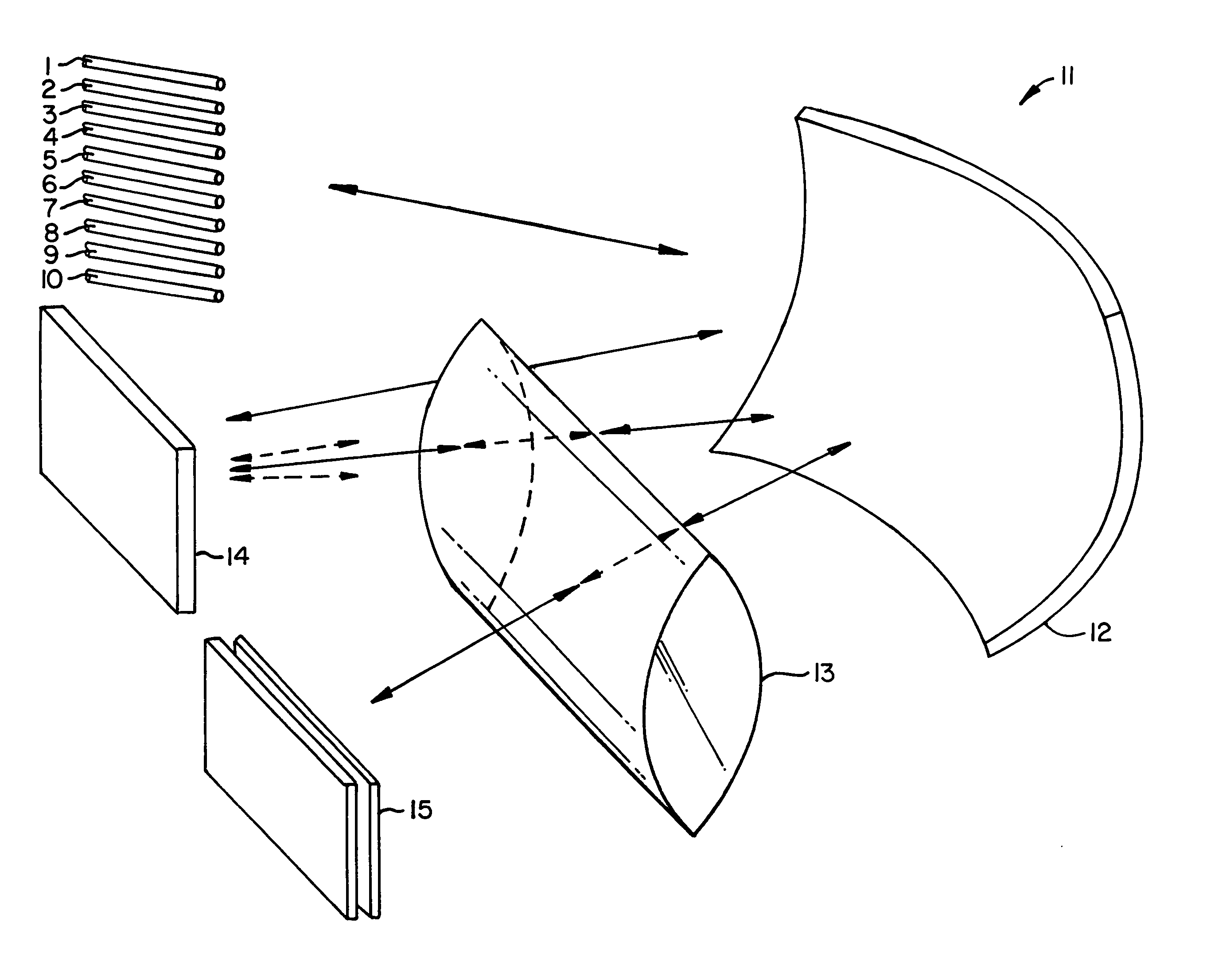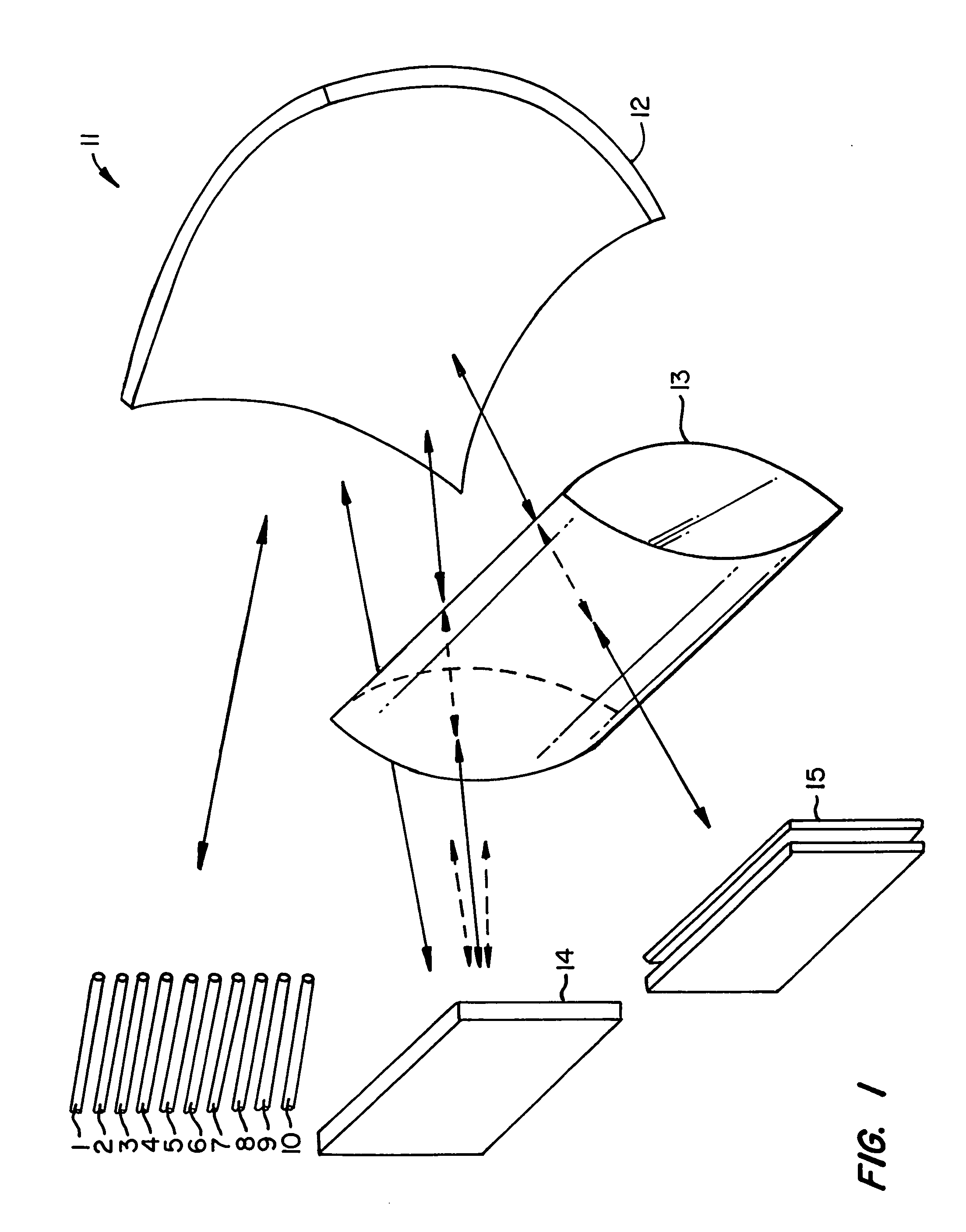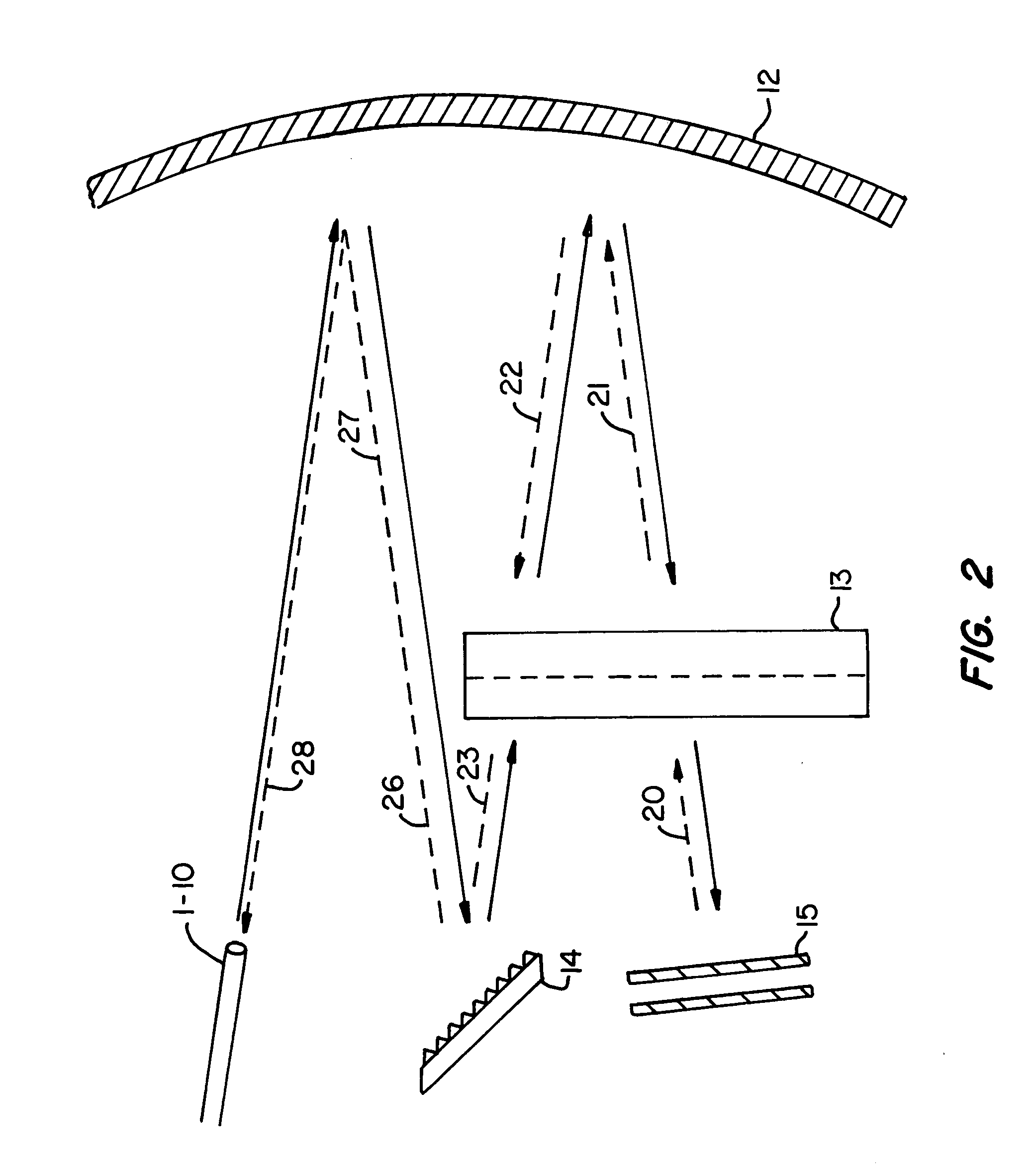Wavelength manipulation system and method
a wavelength manipulation and wavelength technology, applied in the field of optical switching systems, can solve the problems of narrow optical channel dispersion and loss, inability to dynamically reconfigure channel spacing, and inability to scale easily to multiple ports
- Summary
- Abstract
- Description
- Claims
- Application Information
AI Technical Summary
Benefits of technology
Problems solved by technology
Method used
Image
Examples
first embodiment
[0054]In a first embodiment, the Liquid Crystal Display device is utilised to form a reflective diffraction grating such that, as illustrated in FIG. 3, input light 30 is output selectively either in a fully reflective manner 31, to the first order 32, 33 or to the second orders 34, 35.
[0055]The cells of the Liquid Crystal structure can be driven so as to select the output order. FIG. 5–FIG. 9 illustrates one form of the various possible driving arrangements for the 8 cells. In a first arrangement in FIG. 5, designed to produce a 0.0955 first order deflection, the driving state can be as illustrated 52 with the states being 0,0,1,1,2,2,3,3. In FIG. 6, for the negative first order 60, the driving states can be 3,3,2,2,1,1,0,0. In FIG. 7, for the second order output 70, the driving states 71 can be 0,1,2,3,0,1,2,3. Next in FIG. 8, for the negative second output order 80, the driving states 81 can be 3,2,10,3,2,1,0. Finally, in FIG. 9, for the purely reflective state 90, the driving st...
third embodiment
[0088]In a third embodiment the same objective is achieved efficiently employing a micro arrays of cylindrical lenses. The arrangement can be as illustrated in FIG. 11
[0089]In this case, there is provided an input array (in the x axis) of 2 fibres (101 and 102) and output array of 2 fibres (103 and 104) with a fibre spacing of 250 microns. The output of the fibres is coupled into a first micro cylindrical lens (110) to modify the divergence of the beam. The output is then coupled into an x-axis array of cylindrical lenses (111) with a separation corresponding to the fibre separation. The focal length of the lens 111 is chosen to be 500 micron so as to form a collimated beam of approximately 100 micron diameter. This beam is split in the x direction into two polarization states by a walk off crystal (112) of thickness 1.25 mm and then equalized in polarization by the polarization diversity optics 113 which can comprise an array of waveplates having a spacing of 125 microns. The outpu...
PUM
 Login to View More
Login to View More Abstract
Description
Claims
Application Information
 Login to View More
Login to View More - R&D
- Intellectual Property
- Life Sciences
- Materials
- Tech Scout
- Unparalleled Data Quality
- Higher Quality Content
- 60% Fewer Hallucinations
Browse by: Latest US Patents, China's latest patents, Technical Efficacy Thesaurus, Application Domain, Technology Topic, Popular Technical Reports.
© 2025 PatSnap. All rights reserved.Legal|Privacy policy|Modern Slavery Act Transparency Statement|Sitemap|About US| Contact US: help@patsnap.com



